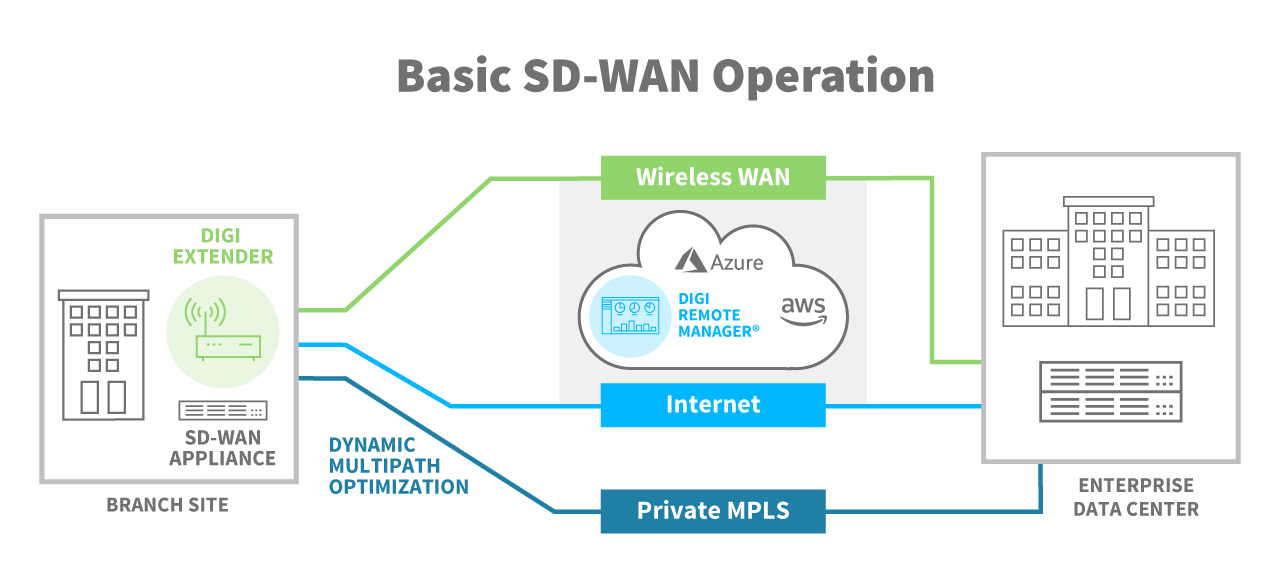

Small to medium businesses (SMBs) are increasingly turning to SD-WAN as a way to improve their operations. SD-WAN can help businesses improve their agility and agility by connecting remote offices with the cloud, giving employees access to critical applications and data anywhere. Organizations can also reduce costs by consolidating multiple wireless networks, improving security, and making it easier to manage and update applications.
Table of Contents

SD-WAN is a style of broadband networking that enables remote offices and branch locations to connect to the corporate network using a secure shared virtual private network (VPN). SD-WAN also allows these remote sites to access the corporate applications and data stores as if they were physically located within the corporate network.
SD-WAN technology is a set of protocols, standards, and technologies that allow for the deployment of Wide Area Networks (WANs). SD-WAN technologies are centered on the idea that by breaking down the traditional WAN into smaller segments, organizations can improve their operational efficiency, scalability, and security.
SD-WAN is a growing market with potential benefits for both small businesses and larger enterprises. The key benefits of SD-WAN include increased reliability and performance, as well as easier management and deployment. Additionally, SD-WAN can help reduce costs associated with traditional WAN services such as bandwidth provisioning and Telco traffic congestion.
Traditional telecommunications networks have been designed for large organizations with extensive customer bases and the need to carry vast amounts of communication data. As such, these networks are not well-suited for small businesses, which typically have smaller customer bases and less need for communication bandwidth.
SD-WANs change this by enabling small businesses to take advantage of the same broadband connectivity that larger organizations enjoy while also providing them with the flexibility and control to tailor their communications infrastructure specifically to their needs. This can include eliminating the need for costly and unflexible colocation or data center solutions, as well as allowing SMBs to take advantage of cloud-based services that offer cost-effective remote access to resources.
In addition to providing benefits specific to SMBs, SD-WANs can also help larger organizations further scale their operations by automating business processes and reducing administrative overhead.
The market for SD-WAN services is booming. Organizations of all sizes are looking to develop better remote connectivity and reduce the cost of data transport. In this article, we will provide a comprehensive overview of the steps you need to take when evaluating SD-WAN services. 1. Understanding your needs: Before you can evaluate a particular SD-WAN service, it is important to understand your specific business requirements. Make sure that the service meets your specific needs, such as speed, performance, security, and scalability.
MPLS is a traditional networking technology that uses dedicated physical circuits between switches to transport packets. VPN uses encryption and authentication techniques to create a secure connection between two points. NFV is a new type of network architecture that uses network functions virtualization to create multiple isolated networks from one underlying infrastructure.
MPLS offers the fastest latency times and the most reliable connection between devices. However, it can be expensive to implement, and it can only support a limited number of devices.
VPNs are more affordable than MPLS, but they offer slower speeds and less reliability. They also require an extra layer of security, as data travels through an encrypted tunnel.
NFV offers the greatest flexibility in terms of device support and deployment options.
In conclusion, SD-WAN is an important technology to consider for small to medium businesses. It can help improve the speed and reliability of your network and can be more cost-effective than traditional WANs.
Sign up to receive our email, delivering the latest stories straight to your inbox.
